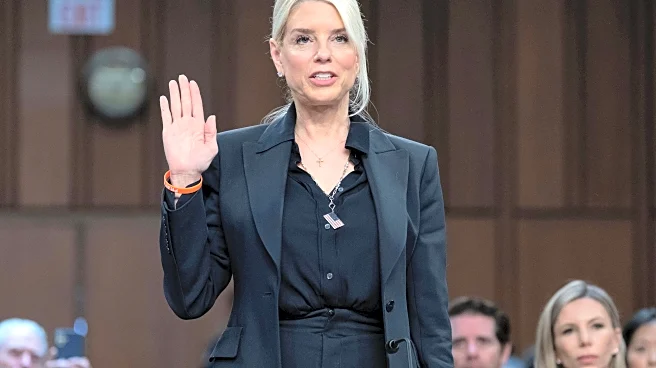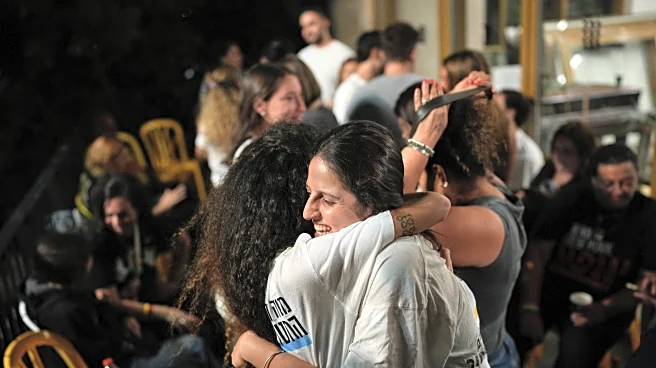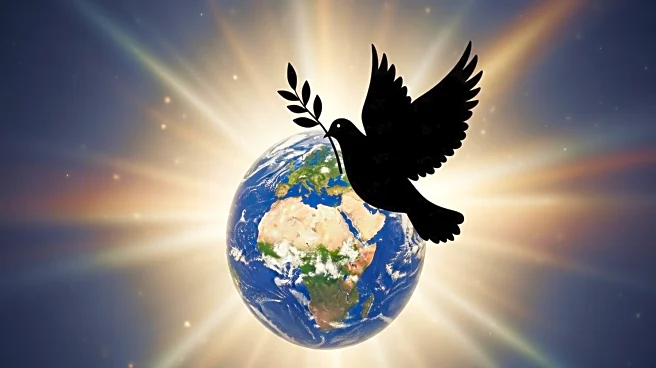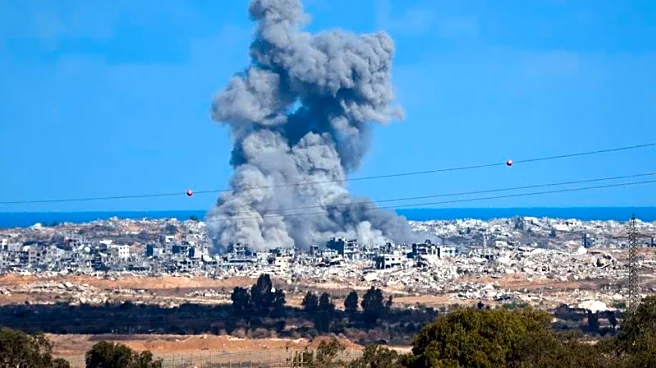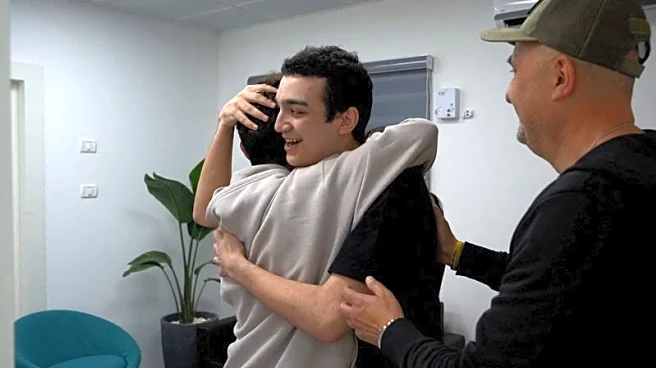What is the story about?
What's Happening?
President Trump announced a ceasefire agreement between Israel and Hamas, marking the first phase of a peace plan that includes the exchange of prisoners. This development has brought a temporary sense of relief to Gaza, where residents have endured prolonged conflict and hardship. The agreement involves the release of 20 Israeli hostages and up to 1,950 Palestinians. Despite the ceasefire, concerns persist among Gaza's population about the potential for renewed violence and the ongoing humanitarian challenges they face.
Why It's Important?
The ceasefire represents a significant diplomatic achievement for President Trump, potentially easing tensions in a region long plagued by conflict. However, the agreement's fragility underscores the complex political dynamics at play, with Israeli Prime Minister Netanyahu facing pressure from far-right coalition partners who oppose concessions. The ceasefire offers a glimmer of hope for Gaza's residents, but the broader implications for regional stability and peace remain uncertain.
What's Next?
The success of the ceasefire will depend on the willingness of both sides to adhere to the agreement and address underlying issues. International pressure, particularly from Washington and European countries, may influence the continuation of the truce. The situation remains precarious, with potential political shifts in Israel and ongoing humanitarian needs in Gaza likely to impact future developments.
Beyond the Headlines
The ceasefire highlights the delicate balance between peace efforts and political survival for leaders involved. Netanyahu's reliance on far-right support complicates the path to lasting peace, while Gaza's residents continue to grapple with the aftermath of conflict. The agreement may serve as a temporary reprieve, but the long-term prospects for peace and stability in the region remain uncertain.
AI Generated Content
Do you find this article useful?


